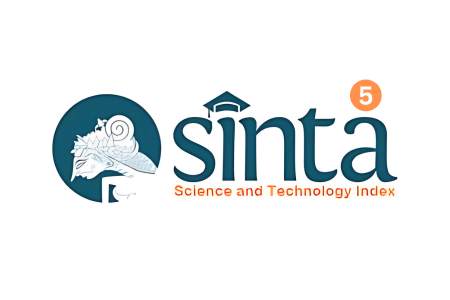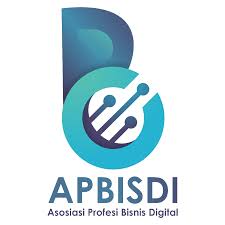Enhancing Secondhand Market Dynamics through Circular Economy Principles and Technological Advancements: A Bibliometric Analysis
Keywords:
Secondhand Market, Circular Economy, Technological Advancement, Bibliometric Analysis, SustainabilityAbstract
Given the increasing focus on sustainability and resource efficiency, the interest in the secondhand market as a vital segment of the circular economy has also risen tremendously. This paper offers a bibliometric analysis of the changing features of the secondhand market that focus on circular economy aspects and technological development that transform this market. In the scope of this review, we strive to establish how the integration of circular strategies such as reuse, recycling, and product life extension as well as advances in technology have improved market efficiency, accessibility experiences for consumers, and efficiency on nature. Important conclusions emphasize the role of digital platforms, blockchain, artificial intelligence, and the Internet of Things in improving the efficiency of product tracking, trust, and transaction transparency in the secondhand market. The knowledge acquired proposes ways in which some of the stakeholders can implement technological solutions to the circular economy and enhance the concept of circularity in the economy.
Downloads
References
Alonso-Muñoz, S., Torrejón-Ramos, M., Medina-Salgado, M. S., & González-Sánchez, R. (2023). Sustainability as a building block for tourism – future research: Tourism Agenda 2030. In Tourism Review (Vol. 78, Issue 2, pp. 461–474). Emerald Publishing. https://doi.org/10.1108/TR-12-2021-0568
Araujo Galvão, G. D., De Nadae, J., Clemente, D. H., Chinen, G., & De Carvalho, M. M. (2018). Circular Economy: Overview of Barriers. Procedia CIRP, 73, 79–85. https://doi.org/10.1016/j.procir.2018.04.011
Cale, D. (2022). Open Market for Reusing Auto Parts with Blockchain. Lecture Notes of the Institute for Computer Sciences, Social-Informatics and Telecommunications Engineering, LNICST, 426 LNICST, 71–84. https://doi.org/10.1007/978-3-030-97603-3_6
Chi, Z., Liu, Z., Wang, F., & Osmani, M. (2023). Driving Circular Economy through Digital Technologies: Current Research Status and Future Directions. In Sustainability (Switzerland) (Vol. 15, Issue 24). Multidisciplinary Digital Publishing Institute (MDPI). https://doi.org/10.3390/su152416608
De Angelis, R., Howard, M., & Miemczyk, J. (2018). Supply chain management and the circular economy: towards the circular supply chain. Production Planning & Control, 29(6), 425–437. https://doi.org/10.1080/09537287.2018.1449244
Diddi, S., & Niehm, L. S. (2017). Corporate social responsibility in the retail apparel context: Exploring consumers’ personal and social norms as antecedents of intentions to engage in moral consumption. Journal of Marketing Channels, 24(1-2), 2–18. https://doi.org/10.1080/1046669X.2017.1347004
Diaz, A., & Baumgartner, R. J. (2024). A managerial approach to product planning for a circular economy: Strategy implementation and evaluation support. Journal of Cleaner Production, 442. https://doi.org/10.1016/j.jclepro.2024.140829
Ellen MacArthur Foundation. (2021). Circular business models: Redefining growth for a thriving fashion industry. https://ellenmacarthurfoundation.org
Gupta, S., Nawaz, N., Tripathi, A., Muneer, S., & Ahmad, N. (2020). The role of AI, IoT, and Blockchain in the transformation of the retail sector. Sustainability, 12(14), 5259. https://doi.org/10.3390/su12145259
Nobre, G. C., & Tavares, E. (2017). Scientific literature analysis on big data and internet of things applications on circular economy: a bibliometric study. Scientometrics, 111(1), 463–492. https://doi.org/10.1007/s11192-017-2281-6
Jones, J. W., Verma, B. P., Nokes, S., Verma, L., Zazueta, F., & Rider, A. (2020). Toward circular food and agricultural systems. Resource: Engineering and Technology for Sustainable World, 27(3), 15–17. https://www.scopus.com/inward/record.uri?eid=2-s2.0-85090779978&partnerID=40&md5=e19872b81fba08e1532687017625c297
Nobre, G. C., & Tavares, E. (2017). Scientific literature analysis on big data and internet of things applications on circular economy: a bibliometric study. Scientometrics, 111(1), 463–492. https://doi.org/10.1007/s11192-017-2281-6
OECD. (2020). Extended Producer Responsibility (EPR) and the impact on waste management. https://www.oecd.org/environment/tools-evaluation/extendedproducerresponsibility.htm
Onete, C. B., Albăstroiu, I., & Dina, R. (2018). Reuse of electronic equipment and software installed on them - An exploratory analysis in the context of circular economy. Amfiteatru Economic, 20(48), 325–339. https://doi.org/10.24818/EA/2018/48/325
Pagoropoulos, A., Pigosso, D. C., & McAloone, T. C. (2017). The emergent role of digital technologies in the circular economy: A review. Procedia CIRP, 64, 19–24. https://doi.org/10.1016/j.procir.2017.03.005
Pavliashvili, S., & Prasek, D. E. (2020). Accelerating transition to the circular economy in Georgia. Bulletin of the Georgian National Academy of Sciences, 14(3), 7–13. https://www.scopus.com/inward/record.uri?eid=2-s2.0-85090941118&partnerID=40&md5=a01ebd90aec4d6624e94f33d51469df6
Saberi, S., Kouhizadeh, M., Sarkis, J., & Shen, L. (2019). Blockchain technology and its relationships to sustainable supply chain management. International Journal of Production Research, 57(7), 2117–2135. https://doi.org/10.1080/00207543.2018.1533261.
Urbinati, A., Rosa, P., Sassanelli, C., Chiaroni, D., & Terzi, S. (2020). Circular business models in the European manufacturing industry: A multiple case study analysis. Journal of Cleaner Production, 274. https://doi.org/10.1016/j.jclepro.2020.122964
Veyssière, S. (2021). Circularity - the circular economy as an innovative process. In Innovation Economics, Engineering and Management Handbook 2: Special Themes (pp. 75–83). https://doi.org/10.1002/9781119832522.ch7.
Wilhelm, M., Schlömer, I., & Maurer, T. (2021). Recommerce: Consumer participation in circular business models. Journal of Business Research, 128, 226–235. https://doi.org/10.1016/j.jbusres.2021.01.011.
Zamani, B., Sandin, G., Svanström, M., & Peters, G. M. (2017). Hotspot identification in the clothing supply chain using social life cycle assessment—Opportunities and challenges of input-output modelling. International Journal of Life Cycle Assessment, 23(3), 536–546. https://doi.org/10.1007/s11367-017-1316-y.
Zink, T., & Geyer, R. (2017). Circular economy rebound. Journal of Industrial Ecology, 21(3), 593–602. https://doi.org/10.1111/jiec.12545
Downloads
Published
How to Cite
Issue
Section
License
Copyright (c) 2025 Journal of Digital Business and Innovation Management

This work is licensed under a Creative Commons Attribution-NonCommercial 4.0 International License.
 Abstract views: 102
,
Abstract views: 102
, PDF Downloads: 125
PDF Downloads: 125






